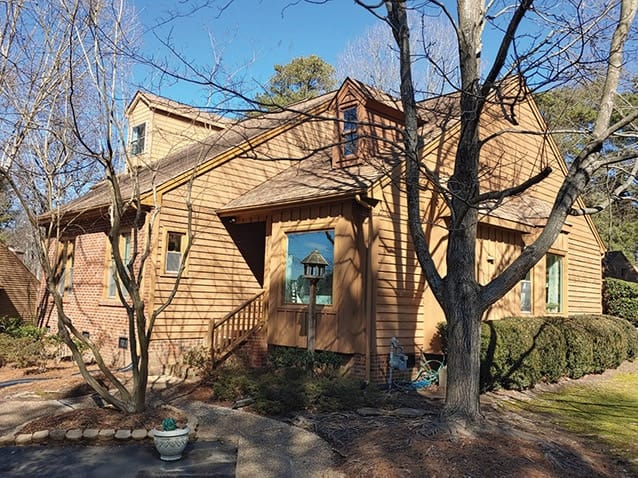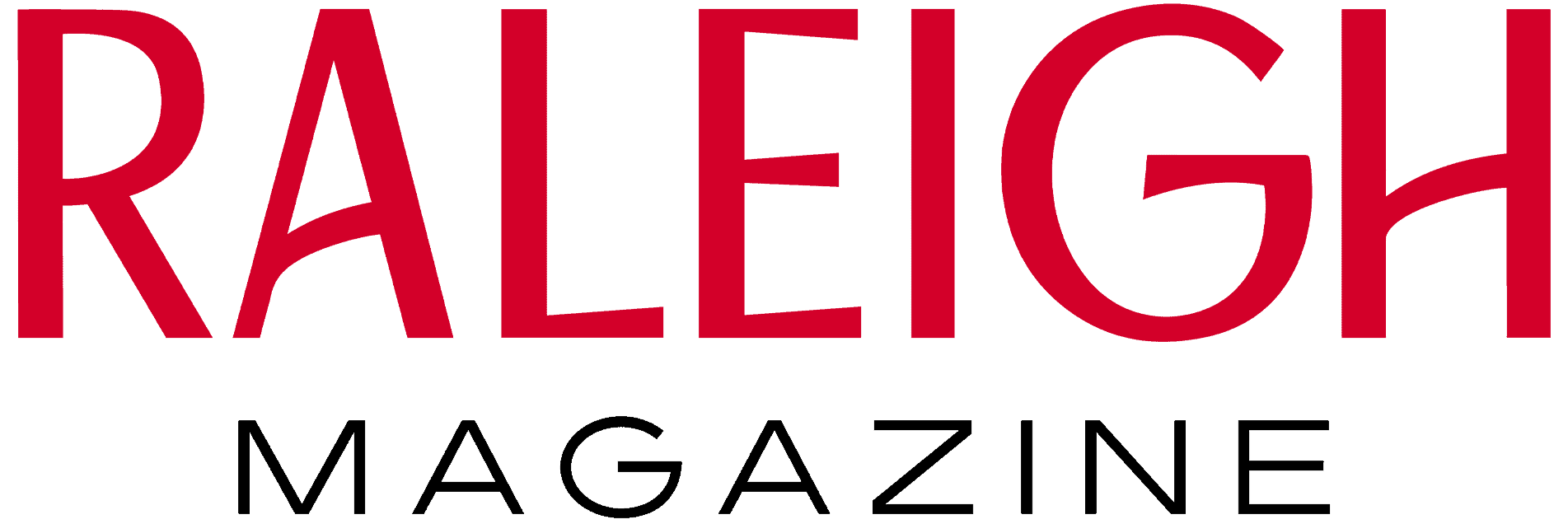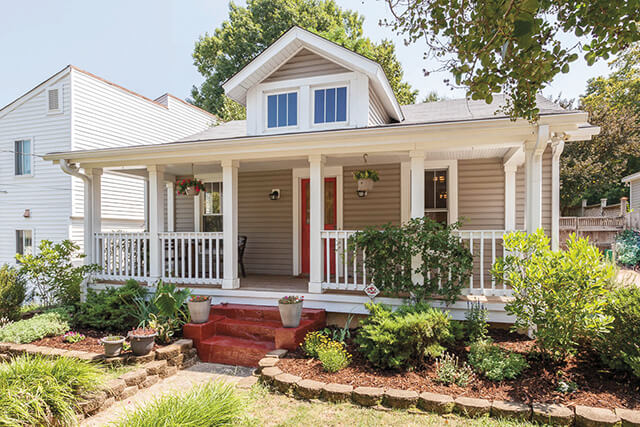Share this Post
The Raleigh real estate market is on fire—but where does that leave the buyer?
Remember when buying a house was all about location? (Location, location location!) Well, in today’s local market, price is trumping location—and urban sprawl is taking over.
“I did not know where Middlesex was, but, last year, I sold 48 homes there,” says The Jim Allen Group President Jim Allen, in regards to the need to expand the search for buyers outside the county (think Middlesex, Zebulon, Louisburg). “Once something is not affordable or attainable—everybody’s got a cap—then that person can no longer find what they’re looking for by location alone.”

And with a population increasing by more than 2% per year, competition is tougher than ever. In fact, as of last month, there were only 1,866 houses on the market in the Triangle, down from nearly 3,000 at the beginning of the year.
“The market is 100% the strongest I’ve ever seen it,” says Allen. “There’s no chance the bubble can explode. Scarcity is what drives these prices up. Inventory is shrinking every single day.”
“Competition” might be the buzzword in today’s hot market. Multiple offers, sight-unseen homes, and a hefty due diligence are the necessary evils of buying a home in the Triangle in 2021.

27607 | Listed: $389,000 | Sold: $410,000
Some real estate agents have even started including escalation clauses in their contracts with buyers, allowing them to bid up to the buyer’s price cap without having to waste time coming back to the buyer for approval. In competitive negotiations, the agent knows how high they can bid via the escalation clause from the beginning—whether it’s an additional $10,000 or $50,000.
You would think that now would be a good time to dump the middle man—the real estate agent—and save that 6% commission, but you’d be mistaken. While you can throw a “coming soon” sign in your yard or post online that your house in a very desirable neighborhood will be on the market for sale by owner (FSBO), you might not land the purchase price you could have with directed guidance.

227603 | Listed: $649,000 | Sold: $720,000
“In today’s market, list price is the starting price,” says Allen. “I don’t believe the average seller is confident enough to play that market.” In fact, this market, Allen says, actually leads to less FSBO because, oftentimes, homes sold in that manner attract buyers looking for deals and the seller gets less money than they would have with multiple offers from an MLS listing. In fact, only about 3% of all listings sell FSBO, while 15 to 20% start that way until sellers change their minds and hire a broker.
In a market where home prices are appreciating by approximately 10.9% per year, value is climbing. In many cases, homes are being sold at 20% to 30% above asking price, and in some cases, more. Allen spoke of a Wake Forest home that was listed at $350,000. Fifty-seven offers later, it sold for $465,000 with a $50,000 due diligence.
And due diligence, the bane of a buyer’s existence, has also increased. An easy $10,000 down has now risen to prices as high as $500,000. While a half-million is rare and way above the average range, it shows how eager some are for the property they desire.

27604 | Listed: $610,000 | Sold: $620,000
So, yes, it’s a seller’s market, but what is the buyer supposed to do? Maybe it’s putting $25,000 due diligence on a $250,000 house (which is scary because sellers who get their property under contract have no risk or obligation to do any requested repairs). Maybe it’s paying the difference between the price of the house and the appraisal value in cash because the value hasn’t caught up with the market yet. Maybe it’s moving to Zebulon, where you can get that townhouse you want at a price you can afford. Or, maybe, your retirement wish of a ranch home on an acre lot is now more realistically the bottom floor unit of a duplex.
“If you’re looking at it from the Realtor’s side, Realtors have to learn to say no and be very up front, very honest and very transparent,” says Allen. “They have to be able to say, ‘What you are looking for does not exist, but here’s what exists instead.’”
Builders and developers need to be creative and be able to offer various product types to fit everyone’s needs. But builders are facing their own dilemmas with the pandemic highly affecting their supply chain. According to Andrew Ervin, a broker at DeRonja Real Estate, the cost of lumber alone is up 188%, and often not even making it to the lumber yards, but, instead, being sent directly to building sites. Even refrigerators and other appliances are difficult to find. Builders now have to order them at the start of a project instead of the end, hoping they arrive by the time the home is completed.

“Production of building material factories slowed and, in some cases, stopped once COVID-19 hit the U.S. and the lockdown was put in place in March of 2020,” says Ervin. “What no one really knew is that the real estate market—specifically new construction—would explode, leaving manufacturers in a high-speed catchup mode. With the steady positive COVID-19 case rate and the need to shut down for a period of time for containment reasons, manufacturers have yet to be able to catch up to demand.”
Lack of materials is also delaying new builds, adding to the shortage of inventory. “Our industry views ‘supply’ as months of inventory available for sale. A balanced market for sellers and buyers is six months—currently, our supply of homes is about a half a month,” says Ervin. “So, if there were no new listings to hit the market, our supply would last just 15 days. The Wall Street Journal is calling this a ‘super-sellers’ market.”
And further upping the competition, out-of-state buyers from California, DC, New York and Illinois are vying with local residents, getting a bigger bang for their buck while being more comfortable buying a house without physically seeing it first. Currently, 70% of the market is selling sight-unseen and in the “coming soon” mode before even going active.

27613 | Listed: $269,000 | Sold: $292,000
For Allen, it’s all about being forthcoming right out of the gate, telling buyers what they need to hear in order to keep their expectations realistic.
“You have to educate your buyer that you have to trust the pictures; you have to trust the video if it’s available. And, the truth is, if you don’t, you’re going to be shut out by the marketplace—especially here locally,” says Allen. “We’re about 6,800 units a year short of supplying the current need.”
With Raleigh ranked as one of the best real estate markets in which to buy, along with ranking as one of the top cities for quality of life, people are not going to stop migrating any time soon. The real estate market is thriving, and while it may be frustrating for some, it’s possible to navigate with the right guide. “If you’re a purchaser, it’s more difficult, but if you’re realistic, it’s not that hard,” Allen says.
Share this Post









Comments
Hi,
Your blog is awesome. I love to read your post. I appreciate you to continue your hard work. Thanks for sharing your knowledge.